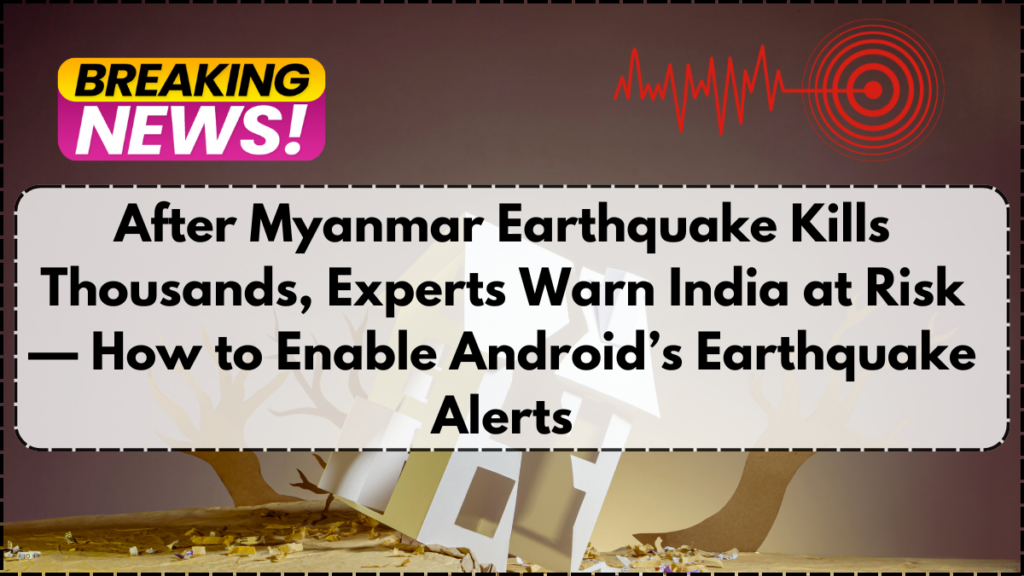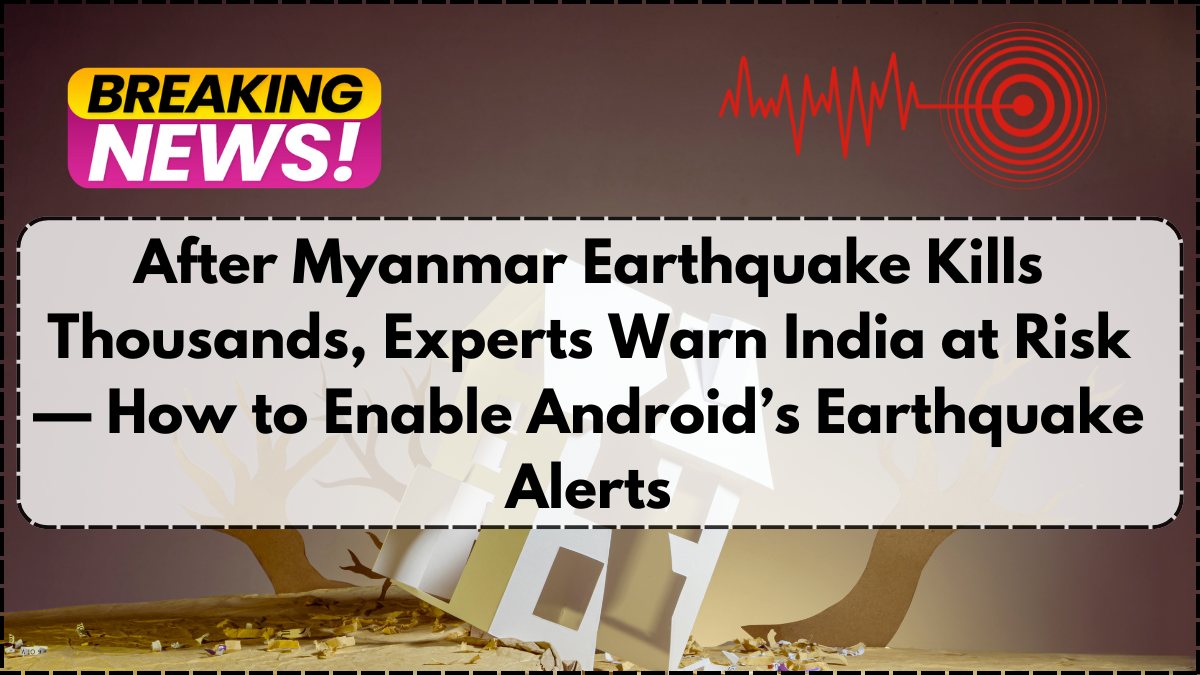In April 2025, the urgency around earthquake preparedness has never been higher. A devastating 7.7 magnitude earthquake recently struck Myanmar, resulting in the tragic loss of over 2,000 lives. Meanwhile, Japan continues to brace for a megaquake that experts warn could kill as many as 300,000 people. While these events may seem geographically isolated, India is not exempt from this looming crisis. Scientists have repeatedly warned that the Himalayas are overdue for a massive seismic rupture—a catastrophe that could rival or exceed those in Myanmar and Japan.

Why the Himalayas Are a Major Concern
India sits on the boundary of the Indian and Eurasian tectonic plates, and this collision is the driving force behind the towering Himalayan mountains. However, this tectonic tension doesn’t just build mountains—it also stores seismic energy. As the Indian plate continues to push northward beneath the Tibetan plateau, the pressure builds until it’s released in the form of powerful earthquakes.
Geophysicist Roger Bilham emphasized back in 2020, “Two or more regions of the Himalayas must soon rupture in a great earthquake. It is not a matter of ‘possibly’. They must occur.” This isn’t theoretical; it’s an inevitability. Indian seismologist Supriyo Mitra and researcher Steven G. Wesnousky have echoed these concerns, suggesting that an earthquake of magnitude 8 or more could strike within our lifetimes. The precise timing remains unknown, but the warning signs are unmistakable.
Comparison of Earthquake Risks Across Asia
| Country | Recent Events | Estimated Casualties | Future Threat Level | Key Risk Zones |
|---|---|---|---|---|
| Myanmar | 7.7 magnitude in 2025 | 2,000+ fatalities | High | Sagaing Fault |
| Japan | Ongoing megaquake warnings | Up to 300,000 lives | Critical | Nankai Trough, Tokyo region |
| India | Pending Himalayan quake | Unknown, potentially catastrophic | Critical | Uttarakhand, Himachal, Sikkim |
Why This Matters for India in 2025
Despite growing urban populations and expanding infrastructure, India’s earthquake preparedness remains inconsistent. Many Himalayan cities are densely populated and lack buildings designed to withstand high-magnitude quakes. The 2005 Kashmir earthquake and the 2015 Nepal earthquake offer sobering reminders of how devastating such events can be in this region.
Preparedness now includes more than just policy—it requires real-time technology. One of the easiest ways to enhance personal safety is through early-warning systems like Google’s Android Earthquake Alerts.
How to Enable Google’s Earthquake Alert System on Android (Updated for 2025)
Google’s Earthquake Alert System turns your Android phone into a mini-seismometer. It detects ground motion and sends you warnings seconds before the shaking begins, giving you crucial time to act. This free feature is available in India and other earthquake-prone countries.
Requirements to Use This Feature:
- Android Version: Must be running Android 5.0 (Lollipop) or higher.
- Internet Access: Either Wi-Fi or mobile data must be active.
- Location Settings: Must be enabled for accurate alerts.
Step-by-Step Guide:
- Open Settings: Tap the gear-shaped Settings icon on your phone.
- Go to Safety & Emergency: Scroll and tap this option. If it’s missing, go to Location > Advanced Settings.
- Select Earthquake Alerts: You’ll find this within the safety settings.
- Enable the Feature: Toggle the switch to turn it on. On many devices, this is already activated by default.
By ensuring these settings are correctly enabled, you increase your chances of receiving a timely alert, which can help you move to safety before the shaking begins.
Conclusion
With the Himalayan fault lines under immense stress and recent tragedies in Asia underscoring the stakes, now is the time for awareness and action. Earthquake preparedness isn’t just the responsibility of governments and experts—it starts with individuals. Activating Google’s Earthquake Alert System is a small but impactful step you can take today to protect yourself and your loved ones. In 2025, staying informed could be the difference between chaos and survival.
FAQs
What makes the Himalayas particularly earthquake-prone?
The region lies at the convergence of the Indian and Eurasian tectonic plates. The ongoing collision builds pressure that eventually releases as large earthquakes.
Can the Google Earthquake Alert system predict earthquakes?
No, it doesn’t predict them but detects early ground motion and sends out alerts within seconds, potentially before the shaking reaches your location.
Is the Google Earthquake Alert system available on iPhones?
Currently, this system is exclusive to Android devices. Apple users can use third-party alert apps, but functionality may vary.
How accurate are these alerts in India?
Accuracy depends on your proximity to the epicenter and internet latency. While not perfect, they provide valuable seconds of warning that can be life-saving.
Are there any regions in India at low risk of earthquakes?
While southern India is relatively less seismically active, no region is entirely immune. Northern and northeastern states remain the highest-risk zones.
For More Information Click Here
Pari is a passionate writer known for captivating stories that blend imagination and reality. Inspired by travel, history, and everyday moments, Pari crafts narratives that resonate deeply with readers.




